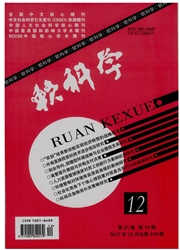

 中文摘要:
中文摘要:
消费者分为“敏感”与“迟钝”两类,构建先由高质量厂商制定价格,再由低质量厂商决定是否通过“标签信号(Label Signal)”或“价格信号(Price Signal)”传递产品低质量信息的两阶段动态博弈模型。讨论仅有“敏感”或仅有“迟钝”消费者,及“敏感”和“迟钝”消费者并存三种市场情形下各自实现市场分离均衡的条件。研究结果表明,仅有“迟钝”消费者的市场中,只能通过价格信号实现市场分离均衡;而存在“敏感”消费者的市场中,既能通过价格信号又能通过标签信号实现市场分离均衡。此外,在“敏感”和“迟钝”消费者并存的市场中,政府监督和惩罚力度较小、低质量产品成本较高及敏感消费者比例较高时,低质量厂商更容易产生伪装成高质量厂商的动机。
 英文摘要:
英文摘要:
There are "sensitive" consumer and "obtuse" consumer in the market, construct a two-stage dynamic game, which, high quality firm sets a price first, and then low quality firm decides whether to transfer information of the low-quality products through "Label Signal" or "Price Signal". Analysis of the condition of separating equilibrium under different market morphology, the market of "sensitive" or "obtuse" consumer, and the market coexistent of "sensitive" and "obtuse" consumer. The result shows that in the market of "obtuse" consumer, only price signals can achieve the market separating equilibrium, but if the market have "sensitive" consumer, not only price signal but also label signal can achieve the market separating equilibrium. In addition, in the market coexistent of "sensitive" and "obtuse" consumer, when the power of goveminent supervision and punishment is relatively lower, the cost of low-quality product is relatively higher, or the market has a higher proportion of "sensitive" consumers, the low-quality firm will more tend to disguise as high-quality one.
 同期刊论文项目
同期刊论文项目
 同项目期刊论文
同项目期刊论文
 期刊信息
期刊信息
